Skeleton Coast, Namibia: A Comprehensive Tourist Guide
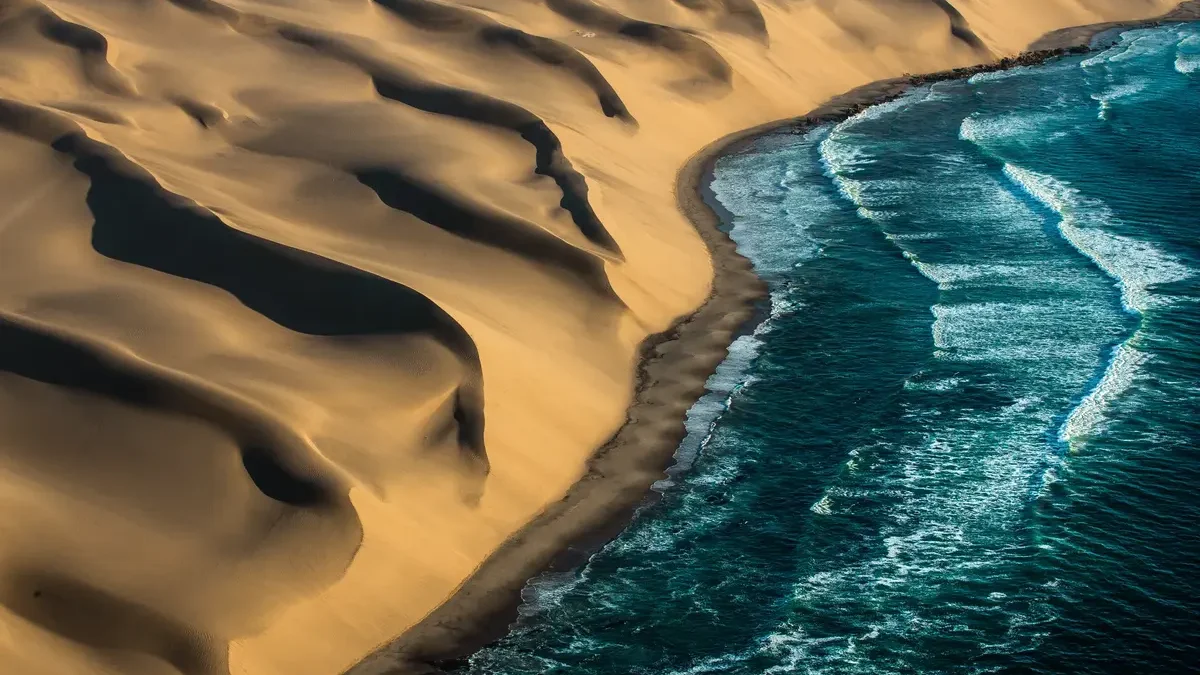
Skeleton Coast, Namibia: A Comprehensive Tourist Guide
The Skeleton Coast, located along the northern part of Namibia’s Atlantic coast, is one of the most hauntingly beautiful and mysterious places on earth. Known for its treacherous fogs, shipwrecks, and desolate yet stunning landscapes, the Skeleton Coast offers a unique adventure for intrepid travelers. This comprehensive guide provides all the essential information needed for a memorable trip, ensuring a rich and immersive experience in this extraordinary environment.
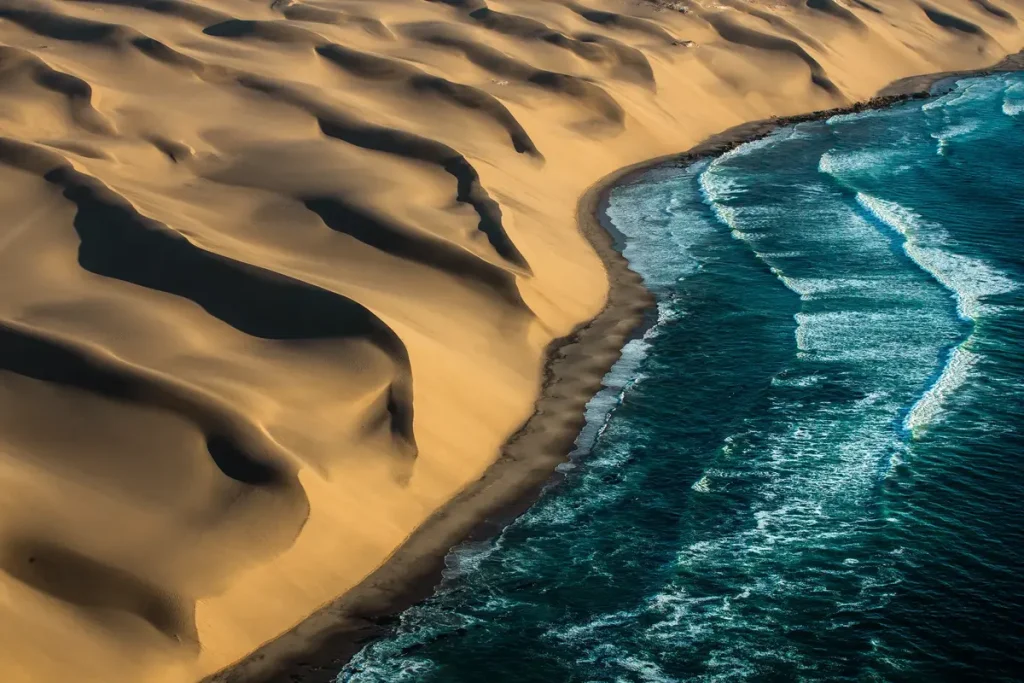
Historical Background
Name Origin
The name “Skeleton Coast” originates from the numerous shipwrecks and whale bones that litter its shores. For centuries, sailors have referred to this stretch of coastline as “The Land God Made in Anger” due to its harsh conditions and deadly reputation. Today, the rusting remains of shipwrecks and scattered bones serve as eerie reminders of the coast’s perilous past.
Indigenous Inhabitants
Despite its harsh environment, the Skeleton Coast has been home to the Himba people for centuries. These semi-nomadic pastoralists have adapted to the arid conditions, maintaining their traditional lifestyle and culture. The Himba are known for their distinctive appearance, with women applying a mixture of red ochre and butterfat to their skin and hair, which protects them from the sun and gives them their characteristic reddish hue.
Conservation Efforts
The Skeleton Coast is part of the Skeleton Coast National Park, established in 1971 to protect its unique ecosystem. The park covers an area of 16,845 square kilometers (6,504 square miles) and extends from the Kunene River in the north to the Ugab River in the south. Conservation efforts focus on preserving the region’s diverse wildlife, including desert-adapted elephants, lions, and seals, as well as its fragile landscapes.

Key Attractions
Shipwrecks
The Skeleton Coast is famous for its shipwrecks, which dot the shoreline and provide a glimpse into the region’s maritime history. Some of the most notable wrecks include:
- Eduard Bohlen: One of the most iconic shipwrecks, the Eduard Bohlen ran aground in 1909 and now lies half-buried in the sand, several hundred meters from the shore.
- Zeila: This relatively recent wreck from 2008 is easily accessible and popular among photographers.
- Dunedin Star: A British cargo liner that wrecked in 1942, leading to a dramatic rescue operation.
Cape Cross Seal Reserve
Cape Cross, located along the southern Skeleton Coast, is home to one of the largest Cape fur seal colonies in the world. During the breeding season, over 200,000 seals gather here, creating a bustling and noisy spectacle. The reserve offers boardwalks and viewing platforms, allowing visitors to observe the seals up close without disturbing them.
The Himba People
Visiting a Himba village provides a unique cultural experience and insight into the traditional way of life of one of Namibia’s indigenous tribes. Tours typically include interactions with Himba families, learning about their customs, and understanding how they have adapted to the harsh desert environment. It is essential to approach such visits with respect and sensitivity.
Skeleton Coast National Park
The Skeleton Coast National Park is divided into two sections: the southern section, accessible to the general public, and the northern section, which requires a special permit and is usually explored through guided tours. Key attractions within the park include:
- Terrace Bay: A former mining settlement now serving as a tourist camp, offering comfortable accommodation and excellent fishing opportunities.
- Hoarusib River: Known for its dramatic landscapes and desert-adapted wildlife, including elephants and lions.
- Clay Castles: Unique geological formations created by erosion, resembling ancient castles.
Wildlife
The Skeleton Coast’s harsh environment supports a surprising array of wildlife adapted to the arid conditions. Visitors can expect to see:
- Desert-Adapted Elephants: These elephants have larger feet and longer legs than their savannah counterparts, enabling them to travel long distances in search of water.
- Lions: The desert-adapted lions are specially adapted to survive in the harsh desert conditions.
- Brown Hyenas: Often seen scavenging along the coast.
- Oryx and Springbok: Commonly found grazing on the sparse vegetation.
- Birdlife: Including flamingos, pelicans, and various raptors.
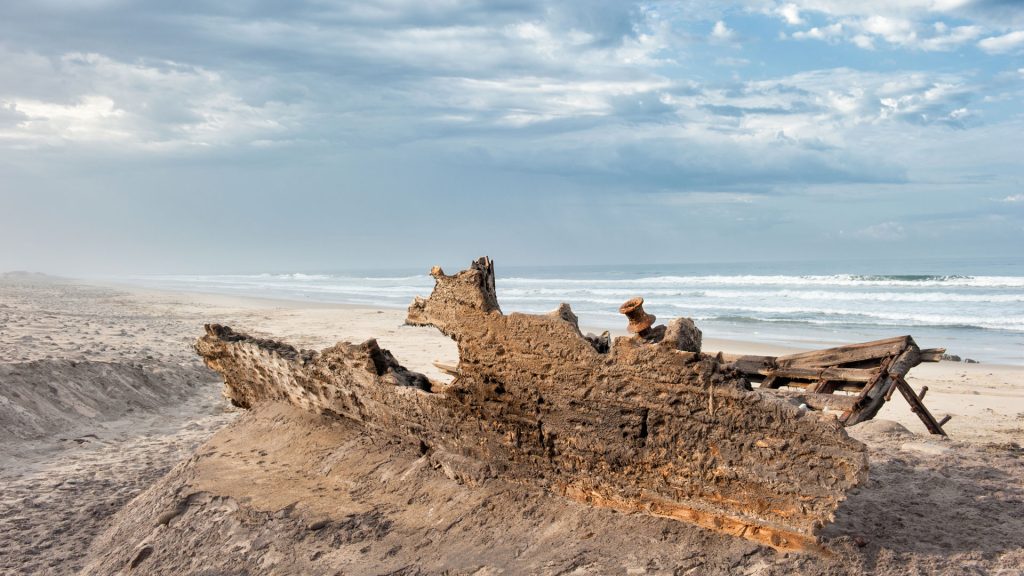
Activities and Adventures
Scenic Flights
One of the best ways to appreciate the vastness and beauty of the Skeleton Coast is from the air. Scenic flights offer breathtaking views of the coastline, shipwrecks, and desert landscapes. These flights typically operate from Swakopmund or Walvis Bay and provide a unique perspective on the region’s dramatic scenery.
4×4 Tours
Guided 4×4 tours are a popular way to explore the Skeleton Coast, allowing access to remote and otherwise inaccessible areas. These tours often include visits to shipwrecks, geological formations, and wildlife viewing opportunities. Experienced guides provide valuable insights into the history, geology, and ecology of the region.
Hiking and Walking Safaris
For those who prefer a more immersive experience, hiking and walking safaris offer a chance to explore the Skeleton Coast on foot. Guided hikes provide an intimate look at the desert’s flora and fauna, as well as its unique geological features. Walking safaris often focus on tracking desert-adapted wildlife and learning about traditional survival skills.
Fishing
Terrace Bay and other parts of the Skeleton Coast are renowned for their excellent fishing opportunities. Anglers can expect to catch a variety of species, including kabeljou, galjoen, and steenbras. Fishing permits are required and can be obtained at local offices or through tour operators.
Photography
The Skeleton Coast’s dramatic landscapes and unique features make it a paradise for photographers. The interplay of light and shadow on the sand dunes, the eerie shipwrecks, and the vibrant wildlife provide endless photographic opportunities. Sunrise and sunset are particularly rewarding times for capturing stunning images.
Accommodation
Luxury Lodges
Several luxury lodges along the Skeleton Coast offer comfortable accommodations and guided tours. These lodges provide all-inclusive packages, including meals, activities, and transportation. Notable options include:
- Shipwreck Lodge: Located within Skeleton Coast National Park, this lodge offers unique shipwreck-themed accommodations and stunning views of the coast.
- Hoanib Skeleton Coast Camp: Situated in a private concession, this camp provides luxurious tents and excellent wildlife viewing opportunities.
- Serra Cafema Camp: Located near the Kunene River, this remote camp offers a unique blend of desert and riverine experiences.
Mid-Range Options
For those seeking comfortable yet affordable accommodations, several mid-range lodges and campsites are available:
- Terrace Bay Camp: A former mining settlement turned tourist camp, offering self-catering units and excellent fishing opportunities.
- Cape Cross Lodge: Located near the Cape Cross Seal Reserve, this lodge provides comfortable rooms and easy access to the seal colony.
- Skeleton Coast Camp: Offering a range of accommodations from basic camping to more comfortable lodge rooms.
Budget Accommodation
Budget travelers can find various campsites and budget lodges that offer basic facilities and a chance to experience the Skeleton Coast’s beauty:
- Spitzkoppe Community Campsite: Located near the iconic Spitzkoppe mountain, offering basic camping facilities and stunning views.
- Mile 108 Campsite: A popular fishing spot with basic camping amenities.
- Brandberg White Lady Lodge: Situated near the Brandberg Mountain, offering affordable accommodations and access to hiking trails.
Practical Information
Getting There
The Skeleton Coast is accessible by road and air. Most visitors fly into Hosea Kutako International Airport in Windhoek, the capital of Namibia, and then travel to the Skeleton Coast by car or domestic flight. The drive from Windhoek to the Skeleton Coast takes approximately 6-8 hours on well-maintained roads. Several tour operators offer guided tours that include transportation from Windhoek.
Park Fees and Permits
Entrance fees are required for Skeleton Coast National Park and other protected areas within the region. These fees contribute to the conservation and maintenance of the park. Permits can be purchased at park gates or through authorized agents. It is advisable to check the latest fee structure and regulations before your visit.
Best Time to Visit
The best time to visit the Skeleton Coast is during the cooler months from May to September. During this period, temperatures are more comfortable, and wildlife viewing is optimal. The summer months (October to April) can be extremely hot, with temperatures exceeding 40°C (104°F) in some areas.
What to Pack
- Clothing: Light, breathable clothing for daytime and warm layers for cooler mornings and evenings.
- Hat and Sunglasses: To protect against the intense sun.
- Sunscreen and Lip Balm: Essential for sun protection.
- Sturdy Walking Shoes: For hiking and exploring the desert.
- Camera and Binoculars: For capturing the stunning landscapes and wildlife.
- Reusable Water Bottle: To stay hydrated in the arid climate.
Responsible Tourism
Conservation Efforts
The Skeleton Coast is a fragile environment, and responsible tourism is crucial for its preservation. Visitors can support conservation efforts by:
- Staying on designated paths and tracks.
- Avoiding littering and minimizing waste.
- Respecting wildlife and maintaining a safe distance.
- Supporting eco-friendly lodges and tour operators.
Community Engagement
Engaging with local communities helps promote sustainable tourism and provides economic benefits to the people living in and around the Skeleton Coast. Purchasing locally made crafts, participating in cultural tours, and staying in community-run lodges are ways to contribute positively to the local economy.
Nearby Attractions
Spitzkoppe
Spitzkoppe
, also known as the “Matterhorn of Africa,” is a group of granite peaks located inland from the Skeleton Coast. The dramatic rock formations and ancient rock art make it a popular destination for hiking, rock climbing, and photography. The community-run campsite offers basic facilities and stunning views of the surrounding landscape.
Brandberg Mountain
Brandberg Mountain, Namibia’s highest peak, is located near the Skeleton Coast and is famous for its ancient rock art, including the famous “White Lady” painting. The mountain offers excellent hiking opportunities and a chance to explore the region’s geological and cultural history.

Twyfelfontein
Twyfelfontein, a UNESCO World Heritage site, is home to one of Africa’s largest collections of prehistoric rock engravings. The site features thousands of engravings created by the San people, depicting animals, humans, and abstract symbols. Guided tours provide insight into the history and significance of these ancient artworks.
Conclusion
The Skeleton Coast is a must-visit destination for anyone seeking an extraordinary adventure in one of the world’s most unique landscapes. From the haunting beauty of shipwrecks and desolate shores to the vibrant wildlife and rich cultural heritage, the Skeleton Coast offers a wealth of experiences for travelers. By following this comprehensive guide, you can ensure a fulfilling and respectful visit, appreciating the natural wonders and cultural richness of this enigmatic region.
Plan your trip to the Skeleton Coast today and embark on a journey that promises to be both awe-inspiring and educational. Whether you’re exploring shipwrecks, observing unique wildlife, or immersing yourself in the local culture, the Skeleton Coast is a place where unforgettable memories are made.
Links
Go To Europe
Go to Asia
Go To Africa
Go to America
-
Skeleton Coast, Namibia: A Comprehensive Tourist Guide
Skeleton Coast, Namibia: A Comprehensive Tourist Guide The Skeleton Coast, located along the northern part of Namibia’s Atlantic coast, is one of the most hauntingly beautiful […]
thecoins24 Bitcoin News Cryptocurrency airdrop theforex24 Forex News Aypa Group Aypa Website developer Aypa SEO
italyeducation تحصیل در ایتالیا تحصیل رایگان در ایتالیا پذیرش تحصیلی در ایتالیا دانشگاه های ایتالیا بورسیه تحصیلی ایتالیا Aypa Digital Marketing Forex Calculator


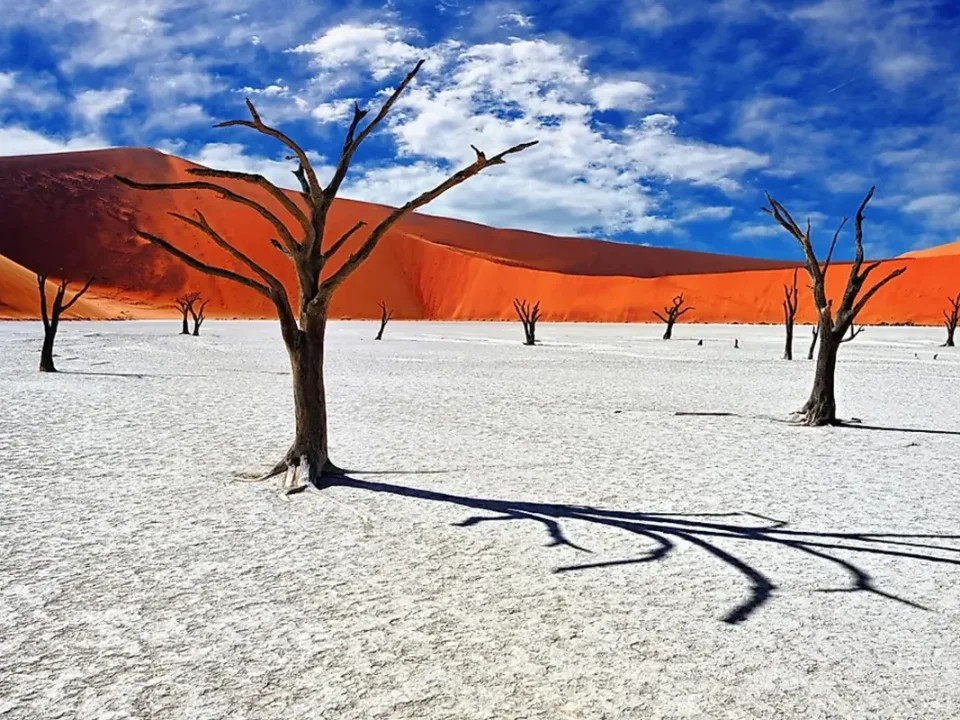
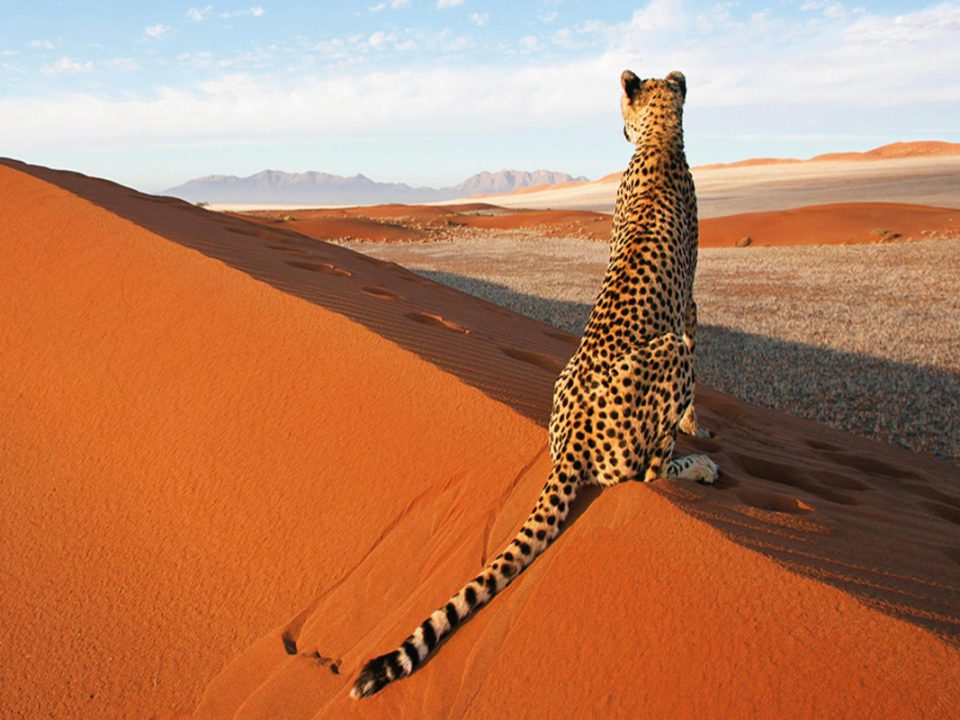
1 Comment
TheForex24 Thecoins24